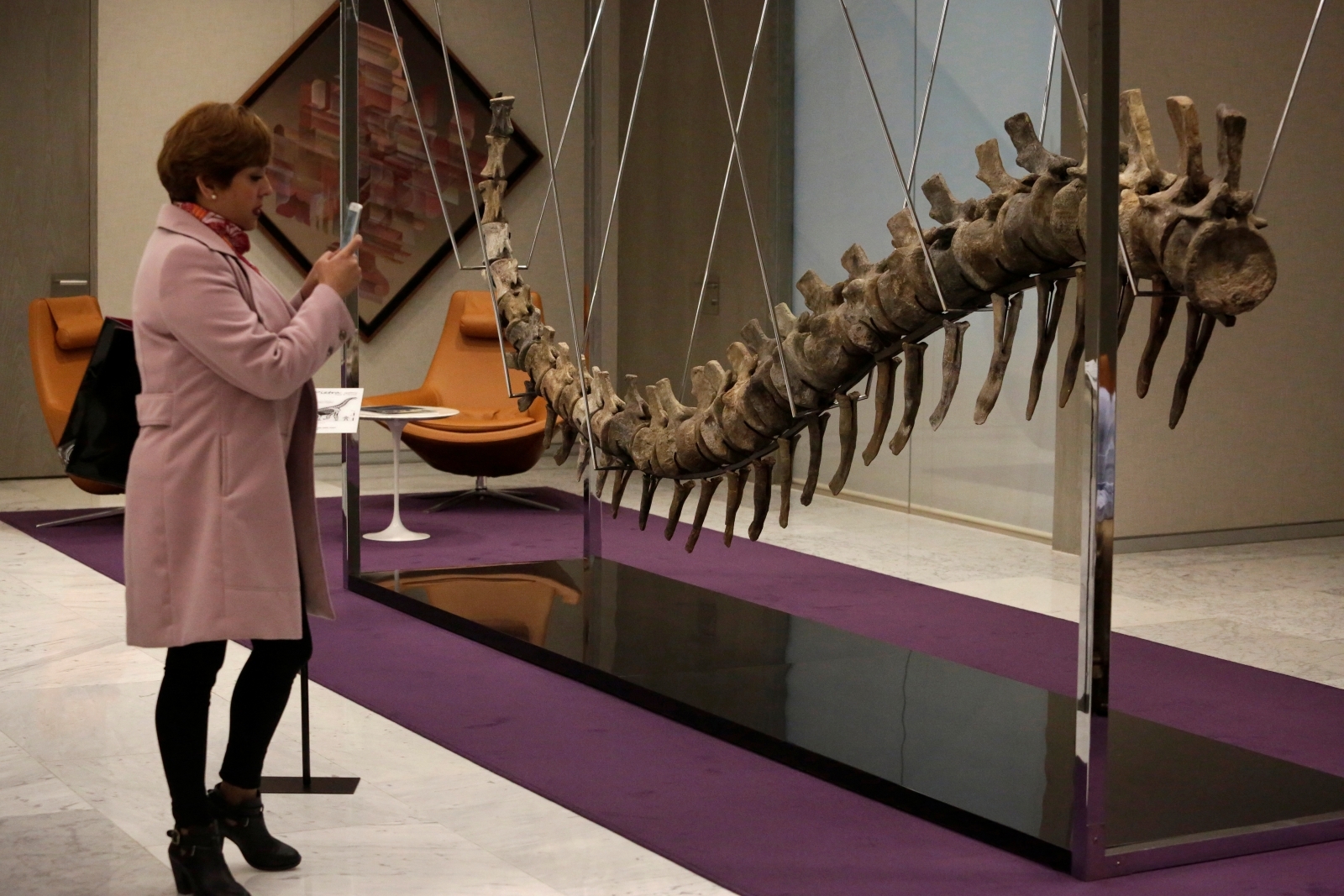165 million-year old Moroccan dinosaur tail fossil to raise money for earthquake-hit Mexican schools
Over 5,000 schools in the country could benefit from this auction.





The fossilised tail of a sauropod dinosaur that once roamed the Atlas mountains in Morocco will be auctioned off in an effort to raise funds to aid in the reconstruction of schools destroyed by earthquakes that hit Mexico three months ago.
The twin earthquakes hit heavily populated cities in the country in September 2017, killing over 480 people and displacing several thousands. While relief efforts are underway, schools are still struggling for funds, notes a report by Reuters.
Funds that come out of the auction on Tuesday (23 January) will benefit multiple schools that were either damaged or destroyed in the disaster. Offered at a reserve price of 1.8m Mexican pesos (£69,540, $95,914), any amount that is bid in the auction above it will go to the BBVA Bancomer Foundation. BBVA will then distribute the money to help rebuild and repair some 5,000 schools, notes the report.
"Education is an element of enormous importance for the country, an element of social mobility, that is why we support the reconstruction of schools," Adolfo Albo, from BBVA Bancomer Foundation, told the news agency. He added that he hoped the tail will auction for a lot more than its reserve price.
The report mentioned that a Mexican businessman who wished to not bring attention to himself had bought the tail for his private collection.
At 180 kg and four metre in length, the tail reportedly belonged to a 17 metre long, 22 tonne sauropod of the Atlasaurus imelakei species. These creatures have roamed the Earth in the middle Jurassic period, about 165 million years ago.
Sauropods were plant eating giants and were among the largest animals to have ever lived on Earth. They are characterised by their long necks and long tails. Relative to the size of their body, they had small heads and thick legs. The species includes such animals as the Diplodocus, Brachiosaurus, Brontosaurus, and Apatosaurus.
Moroccan paleontologists reportedly spent over 300 hours cleaning out the fossils before scientists in Utah put it back together. The tail is now on display at the BBVA Tower in Mexico city.





















